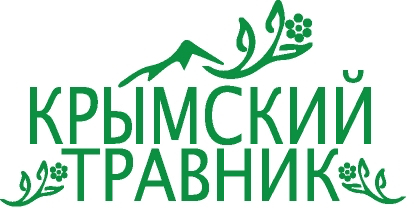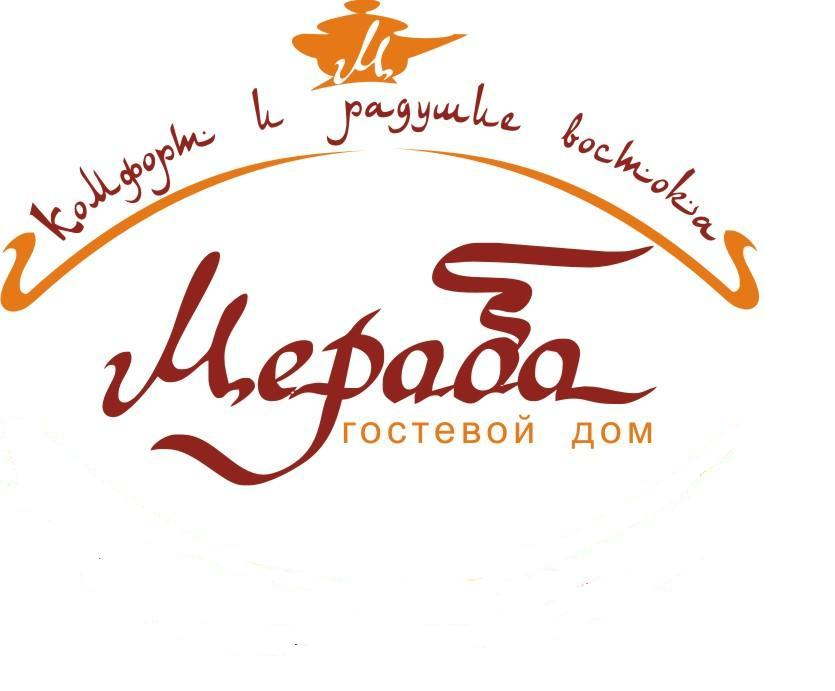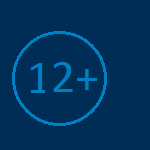МОЛОДЁЖНЫЙ ПРОЕКТ ДЛЯ ТЕХ, КТО ДЕЛАЕТ ПЕРВЫЕ ШАГИ В НАУКЕ
/components/bitrix/system.auth.form/auth_alm/images/login.gif) Войти
Войти /components/bitrix/system.auth.form/auth_alm/images/register.gif) Регистрация
Регистрация
Войти в корпоративную почту как автор/член редколлегии/рецензент журнала




УСПЕХИ В НАУКАХ О КУЛЬТУРЕ / ACHIEVEMENTS IN CULTURAL SCIENCES / FORTSCHRITTE IN DEN KULTURWISSENSCHAFTEN
Ходаковская А.Е., Деревянченко Е.И.
Тема страдающего героя в греческой монументальной скульптуре: от поздней архаики до эллинизма
Ходаковская Анастасия Евгеньевна, студентка 3 курса бакалавриата Исторического факультета МГУ имени М.В. Ломоносова
![]() ORCID ID http://orcid.org/0000-0002-4259-1588
ORCID ID http://orcid.org/0000-0002-4259-1588
E-mail: anastasia-e-khodakovskaya@j-spacetime.com; hodylja@mail.ru
Деревянченко Екатерина Игоревна, студентка 3 курса бакалавриата Филологического факультета МГУ имени М.В. Ломоносова
![]() ORCID ID http://orcid.org/0000-0001-8872-7703
ORCID ID http://orcid.org/0000-0001-8872-7703
E-mail: ekaterina-i-derevyanchenko@j-spacetime.com; kdi96@yandex.ru
Основной целью данной статьи является выявление наиболее важных аспектов в осмыслении чувства страдания на протяжении нескольких этапов развития древнегреческого искусства на примере памятников монументальной скульптуры. На основе анализа художественных средств (композиционных, пластических и др.), выражающих страдание, была прослежена эволюция образа и роли страдающего героя.
Ключевые слова: герой; страдание; заслуженное наказание; натурализм; экспрессия; иконография; психологизм; сопереживание; кентавромахия; амазономахия.
Цитирование по ГОСТ Р 7.0.11—2011:
Ходаковская, А. Е., Деревянченко, Е. И., Тема страдающего героя в греческой монументальной скульптуре: от поздней архаики до эллинизма [Электронный ресурс] / А.Е. Ходаковская, Е.И. Деревянченко // Электронное научное издание Альманах Пространство и Время. — 2017. — Т. 15. — Вып. 1: Studia studiosorum: успехи молодых исследователей. — Стационарный сетевой адрес: 2227-9490e-aprovr_e-ast15-1.2017.41.
Khodakovskaya A.E., Derevyanchenko E.I.
Suffering Hero in Greek Monumental Sculpture: From Late Archaic to Hellenistic Period
Anastasia E. Khodakovskaya, 3rd year student, Historical Department of Lomonosov Moscow State University
![]() ORCID ID http://orcid.org/0000-0002-4259-1588
ORCID ID http://orcid.org/0000-0002-4259-1588
E-mail: anastasia-e-khodakovskaya@j-spacetime.com; hodylja@mail.ru
Ekaterina I. Derevyanchenko, 3rd year student, Philologycal Department of Lomonosov Moscow State University
![]() ORCID ID http://orcid.org/0000-0001-8872-7703
ORCID ID http://orcid.org/0000-0001-8872-7703
E-mail: ekaterina-i-derevyanchenko@j-spacetime.com; kdi96@yandex.ru
In ancient Greek sculpture, a theme of anguish and anguished/suffering hero was of great interest throughout all periods: from the Archaic period to Hellenism.
Using psychological / psychologistic and iconographic approaches and descriptive method, we study evolution of tragic images in Ancient Greek sculpture. In our article, we analyze the most common artistic devices, which were supposed to express suffering and additional connotations of anguish used by sculptors of the specific period.
Giants were the suffering heroes of the sculpted group in Archaic period. Since they fought against the Olympians, they suffered just (what is the most important) punishment. Artistic peculiarities of this period emphasize pain and anguish, thus they are expressed not through anatomy and facial expressions, but through a sophisticated and ‘impossible’ twist of a body. In the early Classical period a new line of the sculpted group demonstrating suffering of the innocent was introduced. The creators could achieve more lifelike effect by dint of elaborate facial expressions, sharp gestures and dynamic stances. Depicting anguish in sculpture consisted of two opposite approaches: ‘expressive’ and ‘passive’. Passive approach was mainly used for showing anguish in archaic way (peacefully and almost emotionlessly). Sculptors of the High Classical period managed to balance these polar approaches by making grimaces of pain and anguish resemble theatrical masks. Due to this shift serenity replaced emotional naturalism of the early Classical period, although sculptors continued to use sharp gestures.
Gradually, artists developed iconography of poses and mythological episodes. Afterwards authors would use it widely as a sign, expressing anguish. By the Hellenistic period heroism disappeared from battle scenes, it became irrelevant regardless of whether a suffering hero was guilty before the Gods or not. In that period it was important to show that a war itself was a disaster. Gestures are hypertrophied, stances are broken down, and a critical degree of expression draws a viewer in and forces him or her to share emotions. This empathy presupposes that the spectator experiences a catharsis, the highly meaningful concept of the ancient drama, which, we suppose, exerted strong influence on ancient Greek sculpture.
We conclude that in Ancient Greece, sculpture, which was influenced by dramatic and pictorial art, presupposed the purification and education of the human soul through empathy to the suffering hero.
Keywords: hero; suffering; deserved punishment; naturalism; expression; iconography; psychologism; empathy; centauromachy; amazonomachy.
Cite MLA 7:
Khodakovskaya, A. E., and E. I. Derevyanchenko. "Suffering Hero in Greek Monumental Sculpture: From Late Archaic to Hellenistic Period." Electronic Scientific Edition Almanac Space and Time 15.1 (Studia Studiosorum: Achievements of Young Researchers) (2017). Web. <2227-9490e-aprovr_e-ast15-1.2017.41>. (In Russian).
Список литературы / References
Литература
Аристотель. Поэтика. М.: Наука, 1978.
Бахтин М.М. Собрание сочинений. Т. III. Теория романа (1930—1961 гг.). М.: Языки славянских культур, 2012.
Вадеев А.Г. Феномен страдания в культуре современности. Автореф. дисс. ... к. филос. н. Н. Новгород, 2005 [Электронный ресурс] // Российская государственная библиотека. Режим доступа: https://search.rsl.ru /ru/record/01002745121.
Веймарн Б.В., Виппер Б.Р., Губер А.А., Доброклонский М.В., Колпинский Ю.Д., Левинсон-Лессинг В.Ф., Сидоров А.А., Тихомиров А.Н., Чегодаев А.Д. Всеобщая история искусств. Т. I. Искусство древнего мира. М.: Искусство, 1956.
Вольтер. Эстетика. М.: Искусство, 1974.
Маркузон В.Ф. Всеобщая история архитектуры. Т. II. Архитектура античного мира (Греция и Рим). М.: Стройиздат, 1973.
Налимова Н.А. Агональные мотивы в греческих архитектурных рельефах со сценами сражений // Традиции античного олимпизма в мировой культуре: от древности до наших дней / Ред. Т.Б. Гвоздева. М.: Изд-во Литературного института им. А.М. Горького, 2015. С. 8—25.
Налимова Н.А. Фигалийский фриз и «троянские» драмы Еврипида. К вопросу о влиянии театра на пластические искусства Древней Греции // Аристей. 2010. № 1. С. 141—143.
Ожегов С.И., Шведова Н.Ю. Толковый словарь Ожегова 1949—1992 [Электронный ресурс] // Словари и энциклопедии на Академике. Режим доступа: https://dic.academic.ru/dic.nsf/ogegova/234262.
Павсаний. Описание Эллады. Т. I—II. СПб.: Алетейя, 1996.
Boardman J. Greek Sculpture: the Archaic Period. New York: Oxford University Press, 1978.
Boardman J. Greek Sculpture: The Late Classical Period and Sculpture at Colonies and Overseas. New York and London: World of Art, 1995.
Boardman J. Greek Sculpture: The Classical Period. New York and London: World of Art, 1987.
Hall E. Greek Tragedy: Suffering under the Sun. Oxford and New York: Oxford University Press, 2010.
Jenkins I. Greek Architecture and Its Sculpture. Cambridge, MA: Harvard University Press, 2006.
Moon W.G., ed. Ancient Greek Art and Iconography. Madison, WI: University. of Wisconsin Press, 1983.
Neer R. The Emergence of the Classical Style in Greek Sculpture. London and Chicago: University of Chicago Press, 2010.
Palagia O., Pollitt J.J., eds. Personal Styles in Greek Sculpture. Cambridge, MA: Cambridge University Press, 1996. (Yale Classical Studies, volume 30).
Papastamati S. "The Poetics of kalos thanatos in Euripides’ Hecuba." Mnemosyne 70.3 (2017): 361—385.
Smith T.J., Plantzos D., eds. A Companion to Greek Art. Oxford and Chichester: John Wiley & Sons, 2012, volume 1.
Vermeule E. Aspects of Death in Early Greek Art and Poetry. Berkeley, Los Angeles, and London: University of California Press 1979.
von Mach E. Greek Sculpture: Its Spirit and Its Principles. New York: Parkstone Press International, 2006.
References
Aristotle. Poetics. Moscow: Nauka Publisher, 1978. (In Russian).
Bakhtin M.M. Collected Writings, Volume 3: The Theory of Novel (1930—1961). Moscow: Yazyki slavyznskikh kultur Publisher, 2012. (In Russian).
Boardman J. Greek Sculpture: the Archaic Period. New York: Oxford University Press, 1978.
Boardman J. Greek Sculpture: The Classical Period. New York and London: World of Art, 1987.
Boardman J. Greek Sculpture: The Late Classical Period and Sculpture at Colonies and Overseas. New York and London: World of Art, 1995.
Hall E. Greek Tragedy: Suffering under the Sun. Oxford and New York: Oxford University Press, 2010.
Jenkins I. Greek Architecture and Its Sculpture. Cambridge, MA: Harvard University Press, 2006.
Moon W.G., ed. Ancient Greek Art and Iconography. Madison, WI: University. of Wisconsin Press, 1983.
Markuson V.F. The General History of Architecture, Volume 2. Architecture of the Ancient World (Greece and Rome). Moscow: Stroyizdat Publisher, 1973. (In Russian).
Nalimova N.A. "Motifs of Agon in Greek Architectural Reliefs with Scenes of Battles." Traditions of Ancient Olympism in World Culture: From Antiquity to the Present Day. Ed. T.B. Gvozdeva. Moscow: A.M. Gorky Literary Institute, 2015, pp. 8—25. (In Russian).
Nalimova N.A. "The Figali Frieze and ‘Trojan’ Dramas of Euripides. On the Matter of Influence of the Theater on Plastic Arts in Ancient Greece." Aristaeus 1 (2010): 141—143. (In Russian).
Neer R. The Emergence of the Classical Style in Greek Sculpture. London and Chicago: University of Chicago Press, 2010.
Ozhegov S.I., Shvedova N.Yu. "Ozhegov’s Explanatory Dictionary, 1949—1992." Dictionaries and Encyclopedias on Academic.ru. N.p., n.d. Web. <https://dic.academic.ru/dic.nsf/ogegova/234262>. (In Russian).
Palagia O., Pollitt J.J., eds. Personal Styles in Greek Sculpture. Cambridge, MA: Cambridge University Press, 1996. (Yale Classical Studies, volume 30).
Papastamati S. "The Poetics of kalos thanatos in Euripides’ Hecuba." Mnemosyne 70.3 (2017): 361—385.
Pausanias. Description of Hellas. St. Petersburg: Aleteya Publisher, 1996, volumes 1, 2. (In Russian).
Smith T.J., Plantzos D., eds. A Companion to Greek Art. Oxford and Chichester: John Wiley & Sons, 2012, volume 1.
Vadeyev A.G. The Phenomenon of Suffering in Culture of Modernity. Synopsis of Ph.D. diss. Nizhny Novgorod, 2005. (In Russian).
Veimarn B.V., Vipper B.P., Guber A.A., Dobroklonsky M.V., Kolpinsky Yu.D., Levinson-Lessing V.F., Sidorov A.A., Tikhomirov A.N., Chegodayev A.D. Universal Art History, Volume I: Art of the Ancient World. Moscow: Iskusstvo Publisher, 1956. (In Russian).
Vermeule E. Aspects of Death in Early Greek Art and Poetry. Berkeley, Los Angeles, and London: University of California Press 1979.
Voltaire. Aesthetics. Moscow: Iskusstvo Publisher, 1974. (In Russian).
von Mach E. Greek Sculpture: Its Spirit and Its Principles. New York: Parkstone Press International, 2006.
Читать статью / Read more












